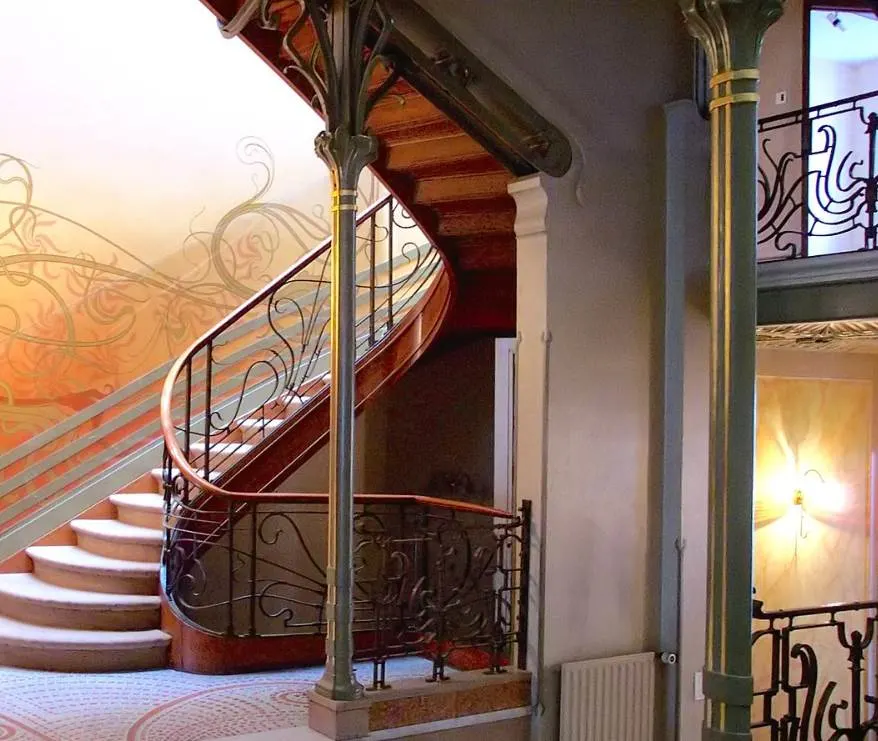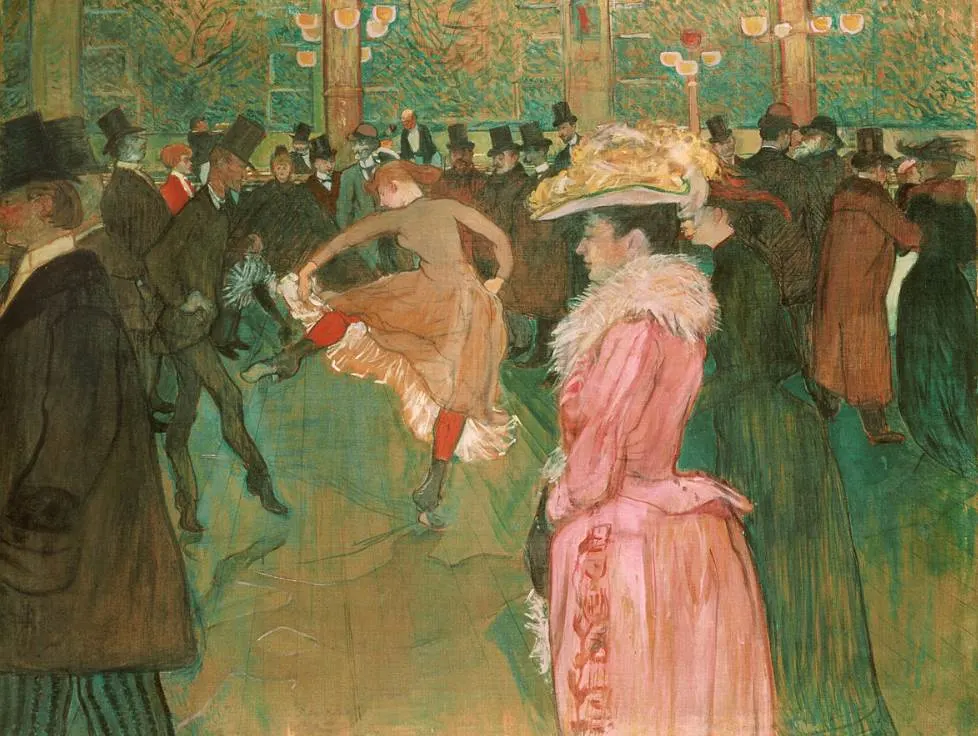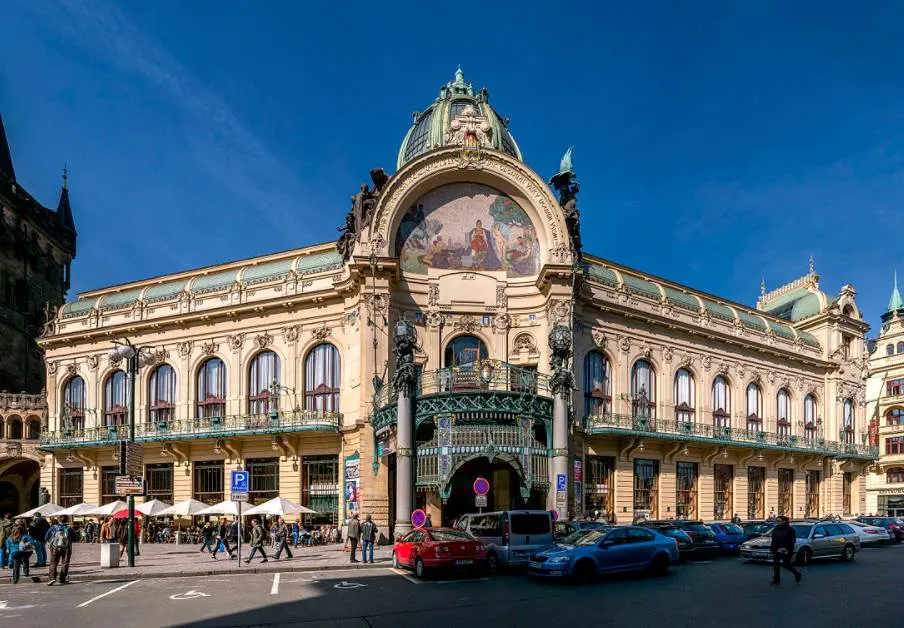By the end of the 19th century, many ambitious and aspiring Art Nouveau artists thought it was time for something new.
That’s why the art movement that emerged at this time in art history is referred to as “Art Nouveau” which translates to “New Art.”
This international movement encompassed architecture, and decorative art, and gradually moved toward visual arts.
So what is Art Nouveau? In this article, you’ll find out!
History of Art Nouveau
The originals of the word Art Nouveau can be traced back to the 1880s when it was used to describe a group of Belgian artists known as “Les XX.”
This group was formed in 1883 and consisted of 20 painters and sculptors who wanted to create a new type of modern art.
This means that it was essentially a reaction against the rigid constraints of academic art. The term really became widespread because of the “Maison de l’Art Nouveau” which opened its doors in Paris in 1895.
The two most important influences on Art Nouveau were:
- The floral designs of the British artist William Morris (1834-1896).
- The increased popularity of Japanese art in the late 19th century (Japonism).
The first feats of Art Nouveau architecture emerged in Brussels and were designed by Victor Horta (1861-1947). This quickly spread to Paris and the rest of Europe.

In the visual arts, Henri de Toulouse-Lautrec and Gustav Klimt paved the way with artworks that featured natural and organic patterns.

Main characteristics of Art Nouveau
Although Art Nouveau was such a widespread art movement, it had very similar characteristics wherever it emerged. Some are:
- Organic, flowing lines and curves derived from nature such as flower stems, lilies, and other organic forms.
- Asymmetrical lines of which the famous “whiplash pattern” is a great example.
- The use of bold, striking colors reflects the colorful feats of nature that were used.
- Different types of materials were integrated into buildings, including iron and glass.
- Glass ceilings were integrated into structures to allow natural light to illuminate spaces.

Art Nouveau was called differently in various places
The first residential buildings that can be classified as Art Nouveau emerged in Brussels. The Hôtel Tassel was completed between 1892 and 1893 and was the first Art Nouveau House in history.
The movement was referred to as “Art Nouveau” in Belgium and France, as well as in some other places such as Romania and Serbia. In Britain, it extended from the Arts and Crafts movement and was called the “Modern Style.”
But what was Art Nouveau called in other parts of the world?
Secession in Austria-Hungary
The Secession movement emerged in Vienna and was led by some of the most famous Austrian artists in history such as Gustav Klimt and Joseph Olbrich. The group constructed the Secession Building which served as their headquarters.
Nieuwe Kunst in the Netherlands
Nieuwe Kunst or “Nieuwe Stijl” were the terms that were used to describe the movement in the Netherlands. This translates to “New Art” or “New Style.” The main difference between the Belgian and French variants is that Nieuw Kunst focused more on Geometric patterns.
Jugendstil in Germany
Jugendstil translates to “Youth Style” and this name was derived from a popular magazine with this name. It emerged in Germany in the mid-1890s and was established as a reaction against Neoclassicism and academic art and architecture.
Stile Liberty in Italy
Stile Liberty or “Liberty Style” was the Italian variant of the widespread Art Nouveau movement. What’s remarkable s that the name was derived from Arthur Lasenby Liberty, a merchant from London who imported Japanese-style decorations to sell at his “Liberty Department Store in London.
Modernismo in Spain
Modernismo is the general term to describe Art Nouveau in Spain. It emerged in Catalonia and Antoni Gaudí was the main exponent, more specifically the Modernista architecture he developed. It was not limited to his buildings in Barcelona as it also encompassed painting and sculpture.
Tiffany Style in the United States
Tiffany Style is the term that describes the Art Nouveau movement in the United States. This name was derived from American artist Louis Comfort Tiffany (1848-1933), a man who developed a unique style of decorative art and stained glass windows. He was the first director of the popular Tiffany & Co. company.

Types of Art Nouveau artworks
Art Nouveau came in many different forms and this is reflected in the various types of artworks that were produced during this period before World War I.
Paintings
Paintings were produced by Art Nouveau artists but were often not classified as such. Art Nouveau painters were often referred to as Post-Impressionist artists or Symbolist artists, two other art movements at the time.
Sculptures
Sculptures produced during this period often incorporated natural and organic motifs and were often highly decorative. Some sculptures were integrated into the façades of buildings.
Architecture
Art Nouveau architecture was characterized by the use of organic elements, asymmetrical lines, and the use of revolutionary materials such as iron and glass.
Furniture and decorative objects
Art Nouveau furniture and decorative objects often featured intricate, handcrafted details and the use of natural materials. Tiffany lamps are a great example of mass-produced decorative artworks that feature typical Art Nouveau patterns.
Graphic design and posters
Graphic design and posters were often highly decorative and became works of art in their own right. Posters to promote popular entertainment venues such as the Moulin Rouge were mass-produced as a marketing strategy.

Most notable Art Nouveau artworks and buildings
- Hôtel Tassel in Brussels – A townhouse designed by Victor Horta in the early 1890s.
- The Kiss (1907-1908) by Gustav Klimt – Iconic painting by the Austrian artist.
- Casa Batlló (1904-1906) – Amazing building designed by Gaudí in Barcelona.
- At the Moulin Rouge: The Dance (1890) – Painting depicting the interior of the cabaret by Henri de Toulouse Lautrec.
- Municipal House (1905-1912) – A stunning Art Nouveau building in Prague that features Art Nouveau frescoes by Alphonse Mucha.
Want to discover more? Check out these famous Art Nouveau Buildings.

